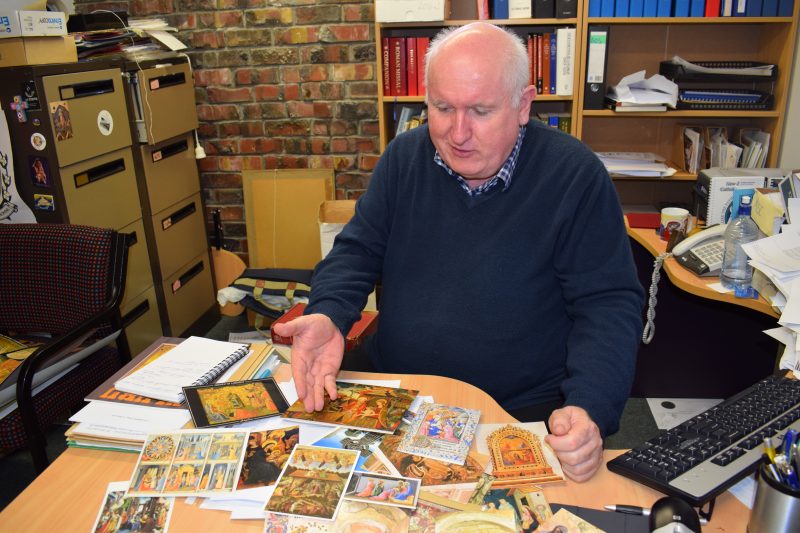In the way Internet memes go viral, the tale of the three wise men caught the imagination of Christendom and got a life of its own, said Fr Merv Duffy, SM, the soon-to-be acting principal of Good Shepherd College. “The idea with memes is they behave in the sphere of ideas the way genes behave in the gene pool. Some genes provide a benefit to those who carry the gene and so they are spread,” he explained. “The idea of the Magi was seen as providing a benefit for the people and so the idea of the Magi was spread.”
Fr Duffy, who teaches dogmatic theology, said for Catholics, Scripture and tradition are both important.
“We’ve had a big revival of Scriptures recently. People were told a great deal about the Scriptures. But I think what people don’t know much about is how the tradition works,” said Fr Duffy.
The tale of the Magi offers a slice of how tradition works in interpreting Scriptures. Fr Duffy said there are only 16 verses in the Bible that dealt with the wise men. They are found only in the Gospel of Matthew.
“It’s amazing what’s not in there (Matthew’s Gospel). It mentions three gifts but it doesn’t mention three Magi. It doesn’t mention how old they are, where they come from, just that they come from the East. No names are given. No camels are mentioned,” he said.
Following the different artistic depictions of the Magi, Fr Duffy pointed out how the Magi eventually became “kings”. One of the earliest representations of the three wise men came from the tombstone of the early Christian, Severa, circa 330 AD. They were depicted as Persians coming from the East.
“This (tombstone) is in the catacomb of San Sebastiano in Rome. We have Mary seated on a high back chair with [the] Christ child and the three young Magi striding towards with gifts,” he said.
About the year 1000AD, the Magi were distinguished by age.
“At the start, there were three young couriers, but, if all the people are going to Christ, then we are not all young. We are young, middle-aged and old. That is something that happens in tradition,” Fr Duffy said.
Another Scripture passage was applied to the Magi story. This time it was Psalm 72: “May the kings of Sheba and Seba bring gifts, may all kings pay him homage”.
In the tenth century Benedictional of Æthelwold, an illuminated benedictional, the Magi were shown as kings.
“Once they were kings, they should come from different countries, because each king should come from his own kingdom. And because they’re kings, they have an entourage because kings don’t travel alone. So, by 1500, the Magi represent the three continents of the world,” said Fr Duffy.
The only continents known at the time were Asia, Europe and Africa.
“The old Magus becomes Asia, the middle aged Magus is Europe and the young Magus becomes Africa. Now, they represent not just the ages of humanity but the different continents that people came from,” he added.
“What’s happened is that tradition has interpreted the scripture, gone beyond it and filled in all sorts of colour and life and details,” he said.
What we can take from the story of the Magi, he said, is that wise men sought Jesus.
“Wise men are still seeking . . . the wise are to seek the Christ and to recognise who he is. We should still follow the star,” he said.

Reader Interactions